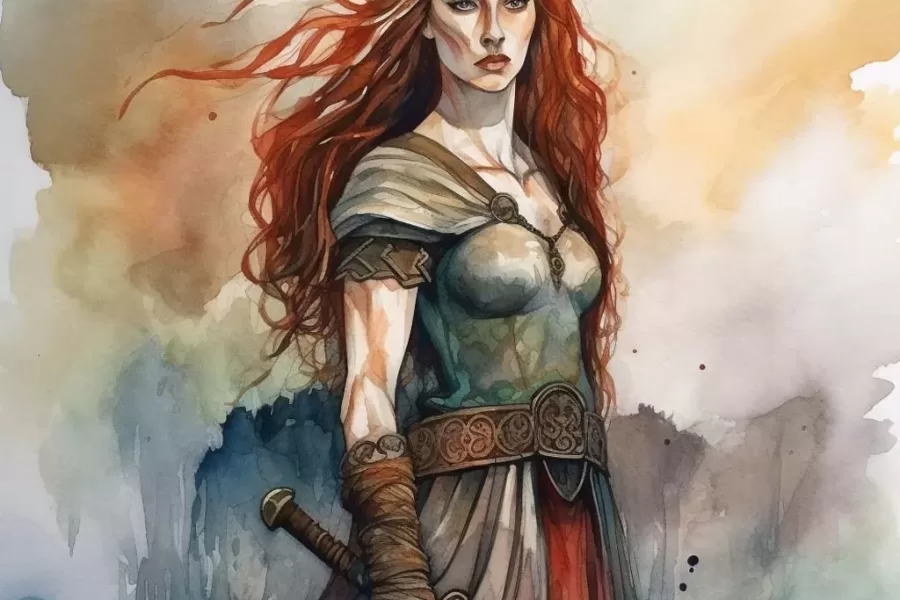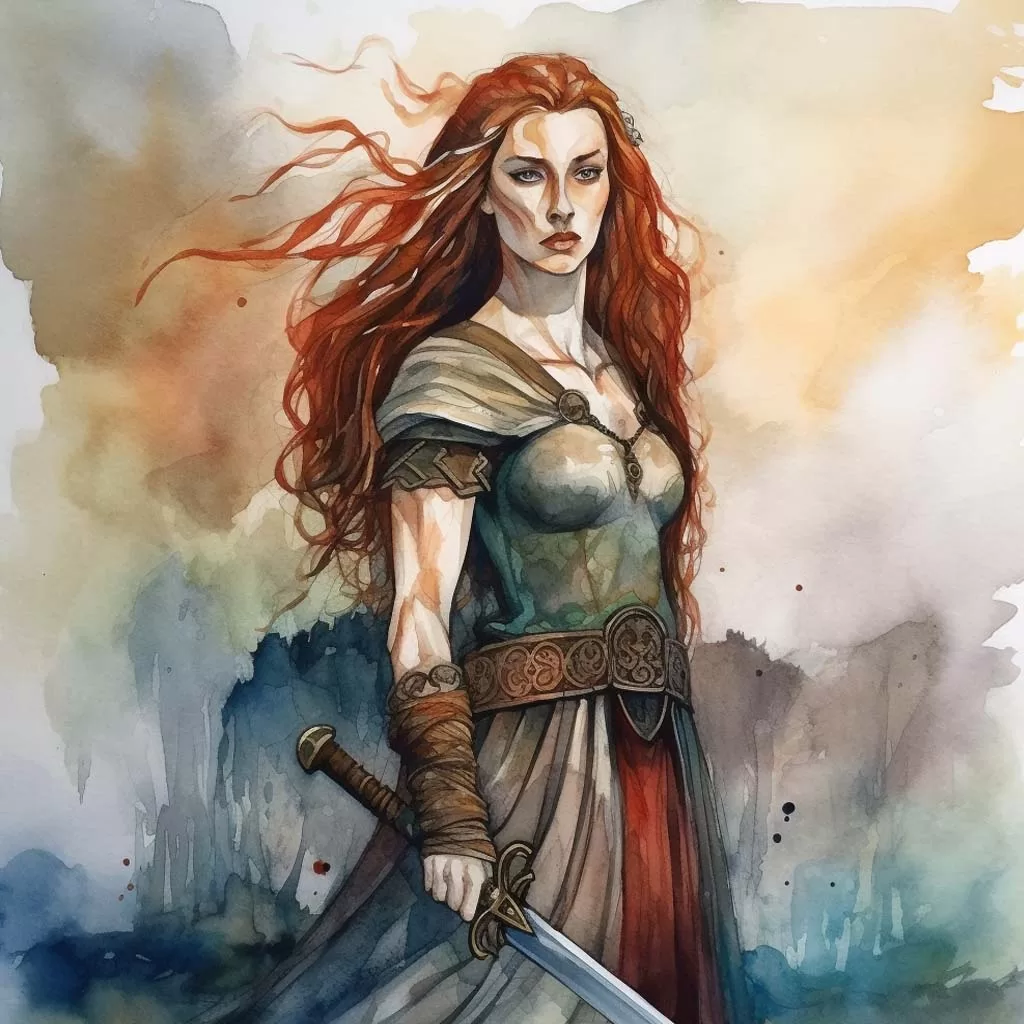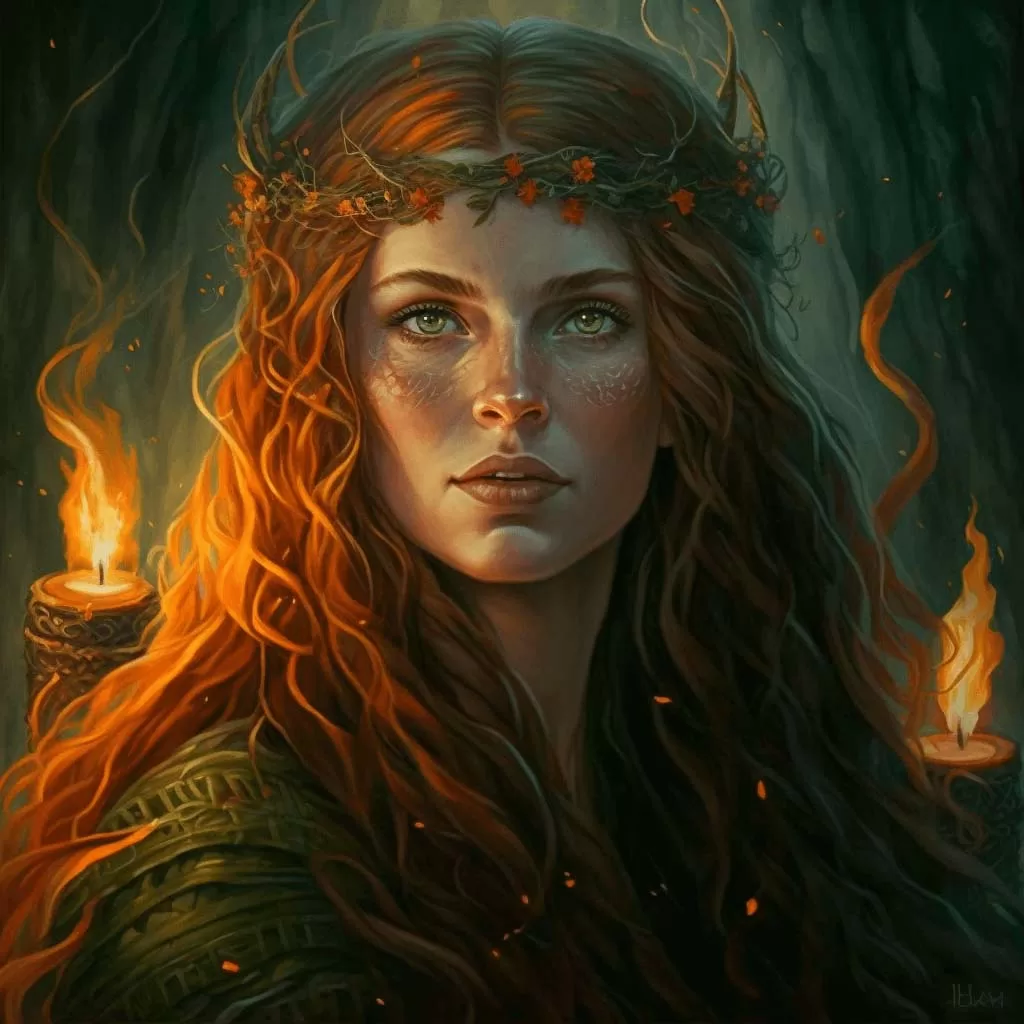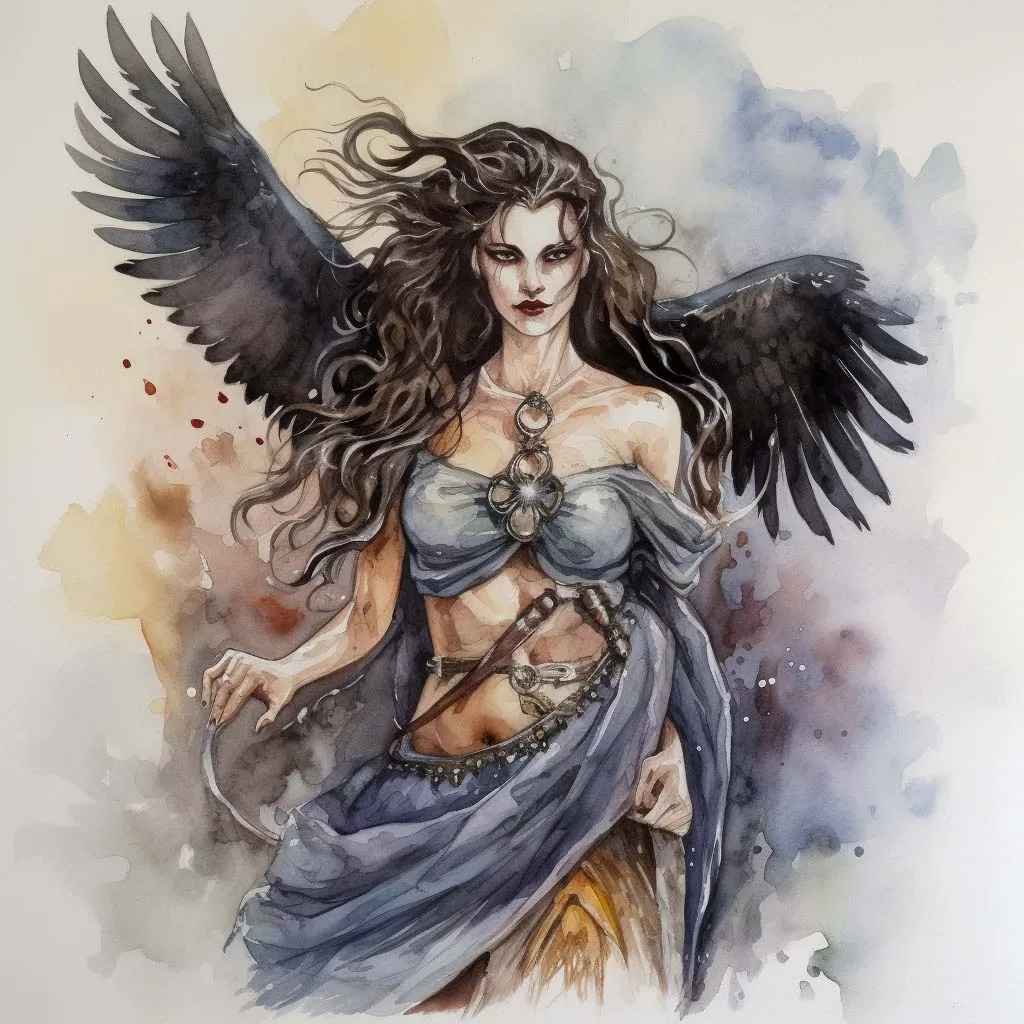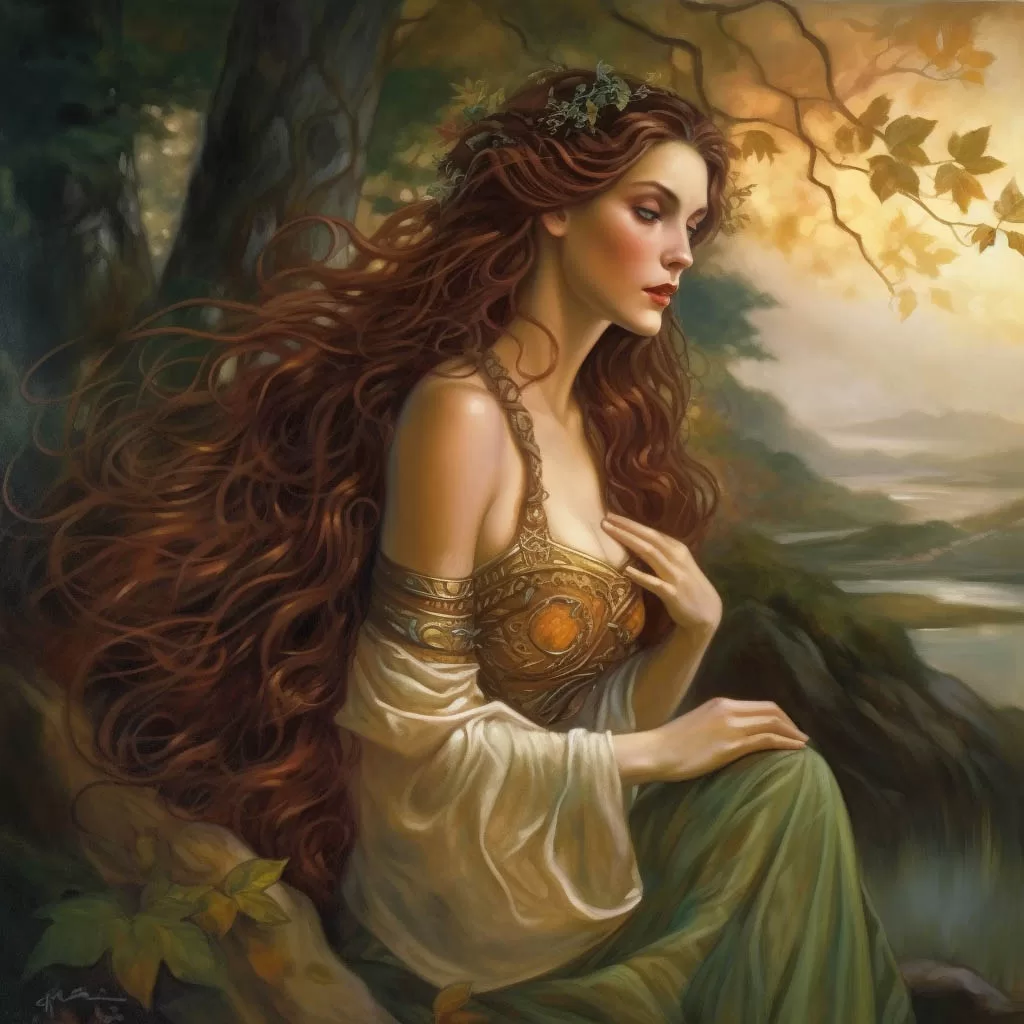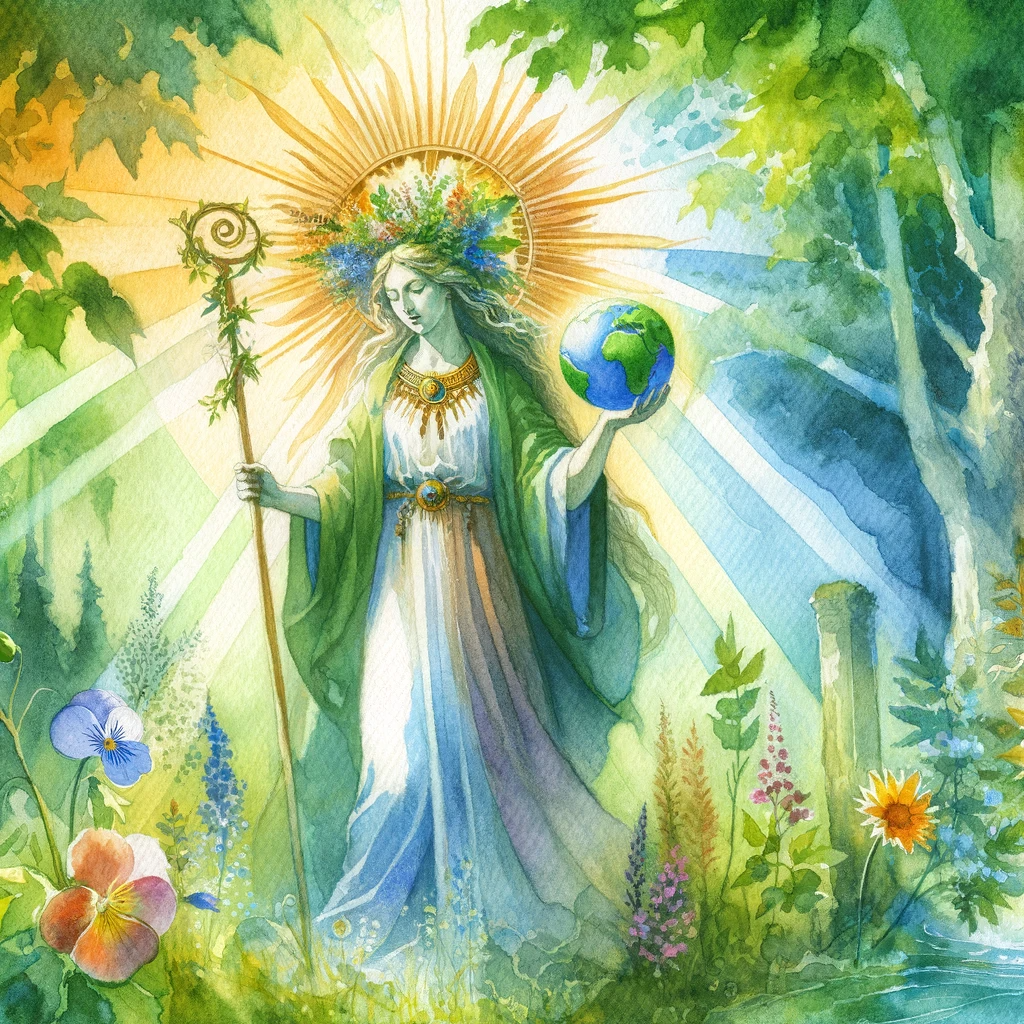Andraste, also known as Andred, Andrasta, and Andarta, was a prominent figure in Celtic mythology as the goddess of victory, war, and sovereignty.
| Origins | Worship | Symbols | Legacy |
She was revered for her strength, courage, and power, and was often invoked by warriors and rulers to ensure success in battle and leadership. In this article, we will explore the mythology and power of Andraste, and how she has influenced Celtic culture and history.
Origins and Mythology
The origins of Andraste can be traced back to the pre-Roman era in Britain, where she was worshipped by the Iceni tribe in what is now modern-day Norfolk. She was often depicted as a fierce and powerful goddess, with the ability to grant victory to her worshippers in battle.
In Celtic mythology, Andraste was associated with the concept of sovereignty, which referred to the divine right to rule over a territory or a people. She was often depicted as a queen, who protected her people and ensured their prosperity. Andraste was also believed to have the power to grant kingship to a worthy candidate, and was often invoked by rulers and nobles to legitimize their authority.
One of the most famous legends associated with Andraste is her role in the Iceni rebellion against the Roman Empire in AD 60-61. According to the Roman historian Tacitus, Queen Boudica of the Iceni invoked Andraste before leading her people into battle against the Roman forces. Boudica was ultimately defeated, but her bravery and defiance inspired generations of Celts to resist Roman rule.
Worship and Festivals
Andraste was worshipped throughout Britain and Gaul, and was often invoked by warriors and rulers to ensure success in battle and leadership. Her cult was particularly strong among the Iceni and other Celtic tribes in Britain, who saw her as a symbol of resistance against foreign domination.
The Iceni celebrated a festival in honor of Andraste on the winter solstice, which was a time of renewal and rebirth. The festival was seen as an opportunity to renew one’s loyalty to the queen and to the tribe, and to ask for her blessings and protection in the coming year.
Symbols and Iconography
Andraste was often depicted in Celtic art and mythology with a variety of symbols and attributes. She was frequently associated with the hare, which was believed to be her sacred animal. The hare was a symbol of swiftness, agility, and cunning, and was often used to depict Andraste’s ability to outmaneuver her enemies.
Another important symbol of Andraste was the spear, which represented her power and strength in battle. The spear was also a symbol of her ability to protect her people and to grant victory to her worshippers.
In some depictions, Andraste was shown with a wheel, which represented the cycle of life, death, and rebirth. The wheel was also a symbol of fortune and destiny, and was often associated with Andraste’s ability to grant sovereignty and power.
Legacy and Influence
Despite the decline of Celtic mythology and religion, Andraste continues to be an important figure in British and Celtic folklore and culture. Her legacy can be seen in the numerous places and landmarks throughout Britain that bear her name, including Andover in Hampshire, Anderton in Lancashire, and Andredswald in Sussex.
Andraste’s influence can also be seen in the numerous stories and legends that have been passed down through generations of British and Celtic people. Many of these stories involve Andraste as a powerful and benevolent Celtic goddess, who helps her people in times of need and ensures their victory and prosperity.
In modern times, Andraste’s legacy has been celebrated by artists, writers, and musicians, who have been inspired by her strength, courage, and power. Her image can be seen in numerous works of art and literature, and her name has been used to evoke the spirit of Britain and its rich cultural heritage.
Conclusion
In conclusion, Andraste is a powerful and important figure in Celtic mythology, revered as the goddess of victory, war, and sovereignty. Her legacy can be seen in the numerous festivals, symbols, and stories that have been passed down through generations of British and Celtic people. Andraste’s strength, courage, and power continue to inspire artists and writers to this day, and her influence can be felt in the rich cultural heritage of Britain.
Recommended Reading
Here are some books on amazon.co.uk about the Celtic goddess Andraste that you might find interesting:
- “The Celts: A Very Short Introduction” by Barry Cunliffe – This book provides an overview of Celtic history, culture, and mythology, including a section on Andraste.
- “The Celtic Myths: A Guide to the Ancient Gods and Legends” by Miranda Aldhouse-Green – This book provides an in-depth look at Celtic mythology, including the role of Andraste and other important deities.
- “The Encyclopedia of Celtic Mythology and Folklore” by Patricia Monaghan – This comprehensive reference book includes a section on Andraste and her mythology.
- “Celtic Gods and Heroes” by Marie-Louise Sjoestedt – This book explores the mythology and symbolism of Celtic gods and heroes, including Andraste.
- “Pagan Portals – Gods and Goddesses of Ireland: A Guide to Irish Deities” by Morgan Daimler – This book provides an overview of Irish deities, including Andraste and her role in Celtic mythology.
- “Celtic Mythology: Tales of Gods, Goddesses, and Heroes” by Philip Freeman – This book includes a section on Andraste and her mythology, along with other important Celtic deities.
These books offer different perspectives and levels of depth into the mythology and worship of Andraste, and can be a great resource for anyone interested in learning more about this fascinating Celtic goddess.
Well done! The Iceni Tribe is the correct answer.
Sorry, that is the wrong answer.

